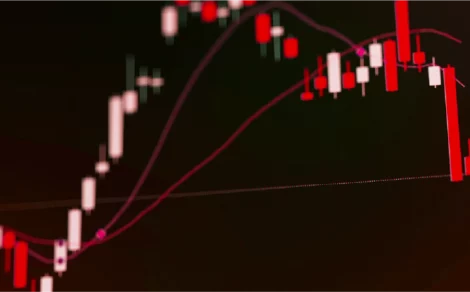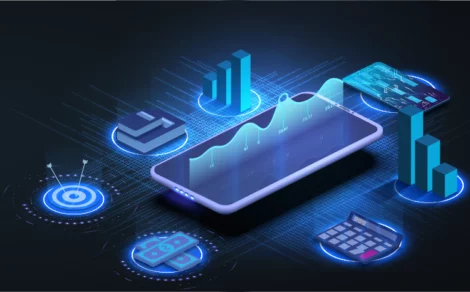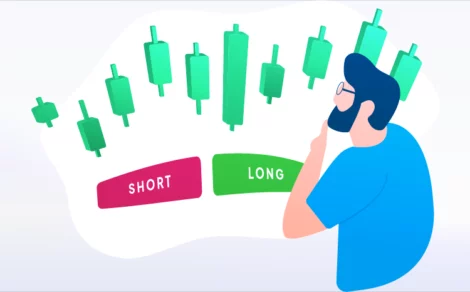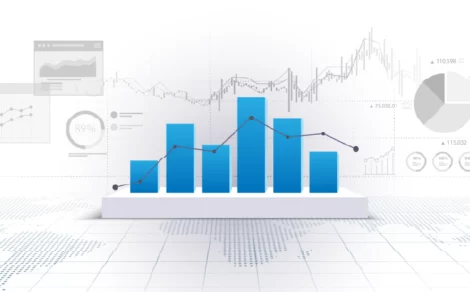Toruscope » Online Trading » What Is Automated Trading? A Beginner’s Guide to Algo Investing
Let’s say you’re sitting at your desk, sipping your third cup of coffee, watching charts flicker. You blink and the price moves faster than you can think. You miss the entry. Again!
Now imagine this: instead of watching the market 24/7, a software program follows your rules and places trades for you. No emotions. No hesitation. Just pure logic.
That’s the idea behind automated trading.
But before you imagine some supercomputer making you rich in your sleep, let’s hit pause. Because there’s a lot more to this world than fancy code and passive profits. In this guide, we’ll look at what is automated trading, how it works, and whether it’s as simple as it sounds.
Let’s Start Simple: What Does Automated Trading Really Mean?
In regular trading, you watch the markets, analyse the charts, and click the button to buy or sell.
In automated trading, you create (or use) a set of rules—an algorithm that does all of that for you.
You tell it:
- When to enter a trade
- When to exit
- How much to buy or sell
- How to manage risk
Once the system is up and running, it follows those rules tick by tick, 24/7 without blinking.
So, in the simplest terms: automated trading is trading without manual execution. You set the rules. The system follows them.
Let’s understand with an example: Say you’re a forex trader. You’ve back tested a strategy that works well when the 50-day moving average crosses above the 200-day moving average. Manually watching this across dozens of currency pairs is exhausting. So, you automate it.
Now your system:
- Scans all pairs
- Detects crossovers
- Places the order
- Sets your stop-loss and take-profit levels
- Closes the trade automatically
And it does this whether you’re working, sleeping, or stuck in traffic.
That’s the automated trading meaning using tech to act on logic-based instructions, so you’re not chained to your desk.
What Does a Trading Bot Actually Do?
Let’s take a closer look at what’s really happening under the hood.
A typical automated trading system can:
- Analyze market data in real-time
- Execute trades based on pre-defined conditions
- Manage multiple markets simultaneously
- Apply risk controls, like maximum drawdown or max daily trades
Most bots or algorithms are coded in languages like Python, MQL, or Pine Script. But don’t worry, you don’t need to be a programmer. Many platforms now offer drag-and-drop systems or allow you to buy/rent bots built by other traders.
The Good, the Bad, and the Real
Now, before you get stars in your eyes, let’s talk reality. Automated trading isn’t magic. It’s just a tool. And like any tool, it’s only as good as the person using it.
The Good:
- No emotional trading – Bots don’t panic or get greedy.
- Faster execution – The moment your condition is met, the trade happens.
- Back-testing potential – You can test strategies over years of data to see if they hold up.
- Multitasking – Your bot can watch 20 charts at once. You? Not so much.
The Bad:
- Over-optimization – Many bots work great in back-tests but flop in live markets.
- Tech hiccups – Internet down? Broker server glitches? Your bot might freeze or misfire.
- False confidence – Just because it’s automated doesn’t mean it’s invincible.
The Real:
Automation helps. But it doesn’t replace discipline, understanding, or risk management.
Is Automated Trading for You?
Here’s the truth: automated trading isn’t for everyone.
Ask yourself:
- Do I have a rule-based strategy?
- Am I comfortable letting go of manual control?
- Can I accept that automation reduces emotion but not risk?
- Do I have time to monitor and adjust the system when needed?
If you’re nodding yes, it might be a good fit. If you’re more of a gut-feel trader, automation may feel too cold or rigid.
Where does it Fit in the Big Picture?
Just like how some investors go for top gold stocks or invest in producing gold companies as a hedge against inflation, others use automation to navigate the stock market without babysitting charts all day.
Whether you’re buying stocks in India, trading forex, or watching a gold miner’s quarterly report, automated systems can help execute consistent strategies.
But again, it’s not a substitute for research. Whether it’s gold, oil, or tech, you need to understand what you’re trading. A bot can’t do your thinking for you. It can only follow your instructions.
Final Word: Use the Tool, Don’t Worship It
So, what is automated trading? It’s a way to trade the markets using rules-based systems that is programmed to act on your behalf, around the clock.
But here’s the thing. It’s not about setting it and forgetting it. It’s about creating something smart, testing it thoroughly, and then using it to support your trading style.
It’s a tool. That’s all. And like any good tool, it takes time to learn how to use it well.
Are you a pro F&O trader? Try Torus Digital’s algo-trading tool and trade like an expert.
FAQs
-
How does automated trading actually function?
It runs on pre-set rules like when to buy, sell, or exit. Once activated, the system scans markets, reads data, and places trades without human input.
-
Can you give an example of automated trading in action?
Sure. Say your bot is set to buy EUR/USD when the RSI drops below 30. The moment that happens, it executes the trade, sets your stop-loss, and even exits when RSI hits 50. All hands-free.
-
Is it really profitable to trade using bots?
It can be, but only if the strategy is solid and risk is well-managed. Many traders lose money by blindly trusting bots without proper testing.
-
What’s the 90% rule in trading?
It suggests that 90% of traders lose 90% of their capital in the first 90 days. Ouch. Automation might reduce emotional errors but it’s not a shortcut to guaranteed profits.
Related Reads
What is Slippage in Trading? Meaning, Causes & Impact Explained
In trading, timing and precision often define success. However, even when a trader believes...
By: torus
- 7 mins
- 01.Jul.2025
- 4(1)
- 96
What is an Option Contract?
Imagine having the flexibility to buy or sell shares at a fixed price, no...
By: torus
- 7 mins
- 01.Jul.2025
- 0(0)
- 43
Types of Financial Instruments You Should Know Before Investing
Before investing funds in any market, it is essential to understand what financial instruments...
By: torus
- 7 mins
- 01.Jul.2025
- 0(0)
- 39
What are Contracts for Difference (CFD)?
Contracts for Difference, commonly known as CFDs, are financial instruments that allow traders to...
By: torus
- 9 mins
- 01.Jul.2025
- 0(0)
- 39
Difference between Short Position & Long Position
Understanding the concepts of short and long positions is essential for anyone interested in...
By: torus
- 8 mins
- 01.Jul.2025
- 0(0)
- 38
Essential Trading Terminologies You Need to Know
Trading in financial markets opens a world full of opportunities. For many first-time investors,...
By: torus
- 8 mins
- 01.Jul.2025
- 0(0)
- 47
Disclaimer: The content provided in this blog is for informational purposes only and does not constitute financial advice or recommendations. The content may be subject to change and revision. Readers are encouraged to conduct their own research and consult with a qualified financial advisor before making any investment decisions. Torus Digital and its affiliates takes no guarantees whatsoever as to its completeness, correctness or accuracy since these details may be acquired from third party and we will not be responsible for any direct or indirect losses or liabilities incurred from actions taken based on the information provided herein. For more details, please visit www.torusdigital.com.
Tenneco Clean Air IPO Listing: Strong Market Debut with 27% Premium
Tenneco Clean Air India Ltd made a confident entrance into the public markets on...
By: torus
- 5 mins
- 19.Nov.2025
-
3.7(6)
-
291
Stock to Buy Today: November 19, 2025
The Indian stock market witnessed a mild decline on November 18, 2025, ending a...
By: torus
- 4 mins
- 19.Nov.2025
-
4.3(3)
-
291
Mirae Asset Infrastructure Fund NFO: A Sector-Focused Bet on India’s Growth
Mirae Asset Mutual Fund has launched a new equity scheme — Mirae Asset Infrastructure...
By: torus
- 4 mins
- 18.Nov.2025
-
4.3(6)
-
291
Emmvee Photovoltaic IPO: Shares Make Muted Market Debut, List Flat At ₹217
Emmvee Photovoltaic Power made a muted debut on 18 November 2025, listing flat at...
By: torus
- 3 mins
- 18.Nov.2025
-
3.7(6)
-
291








